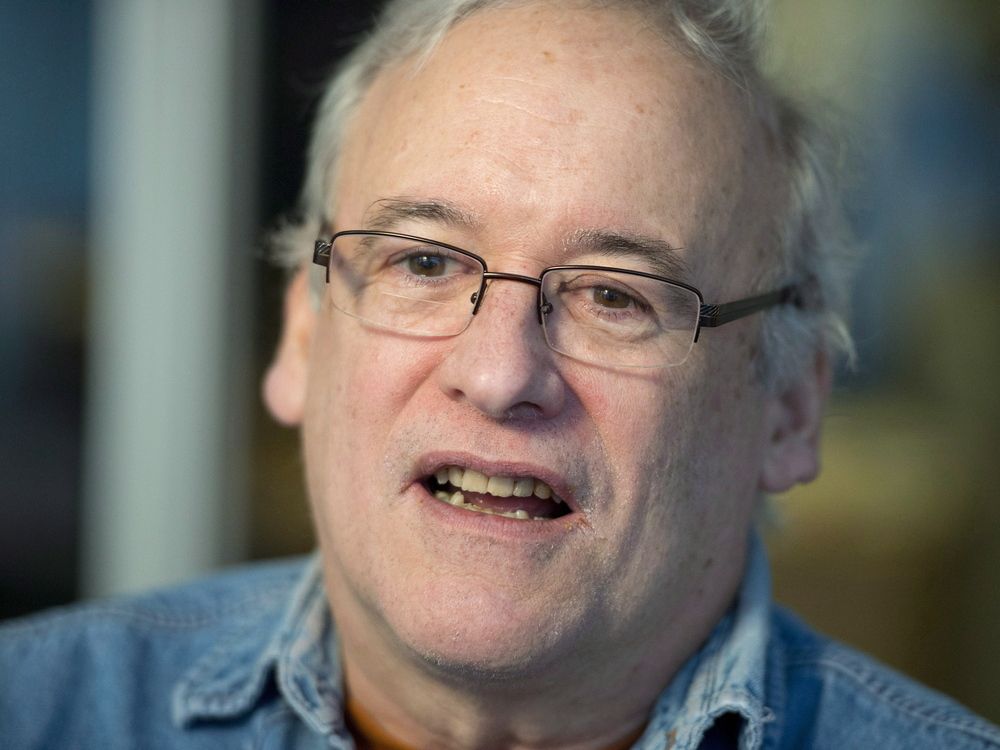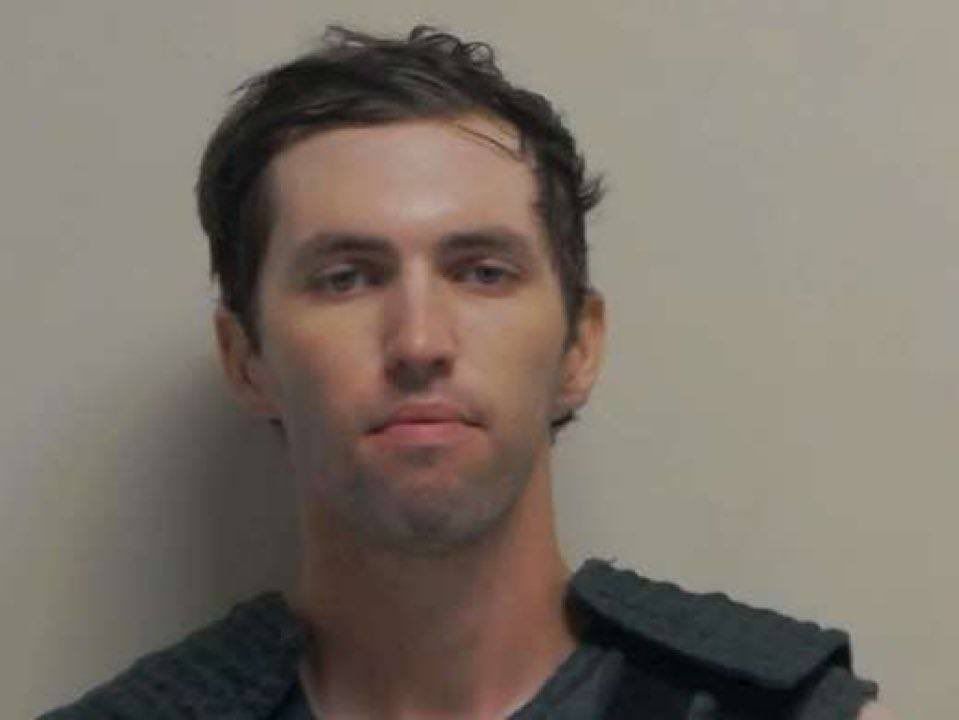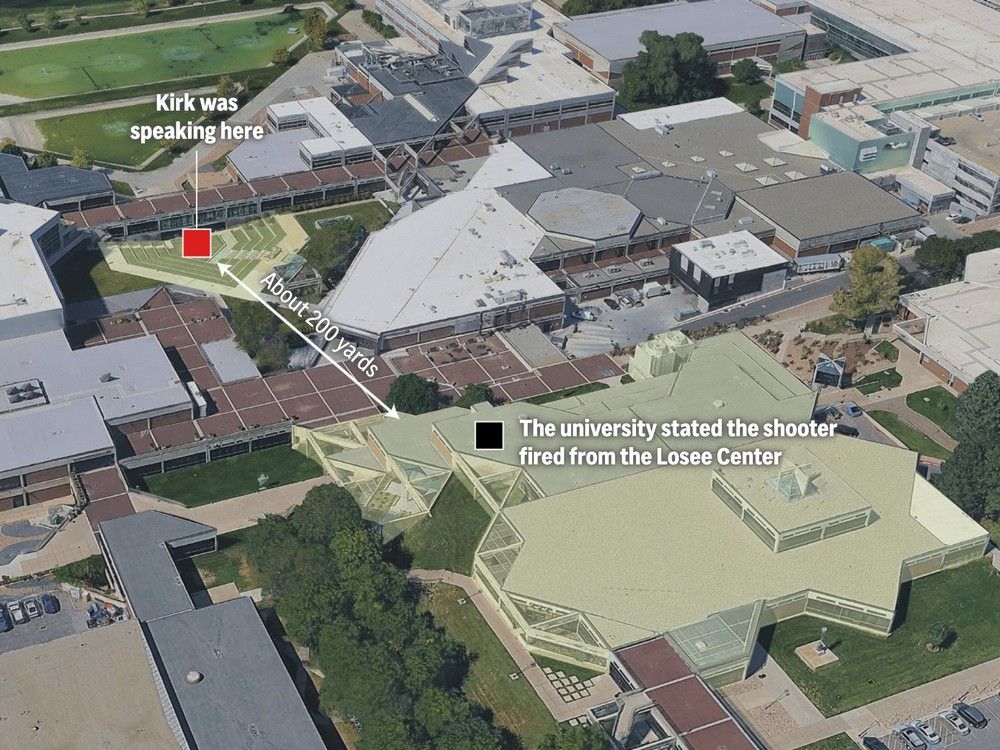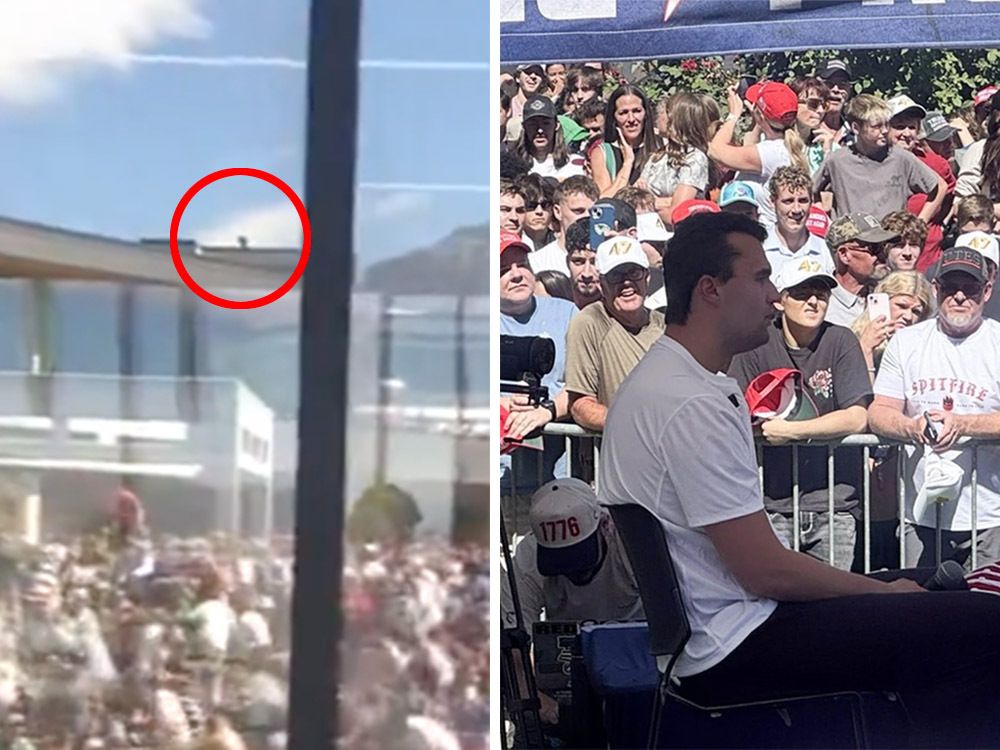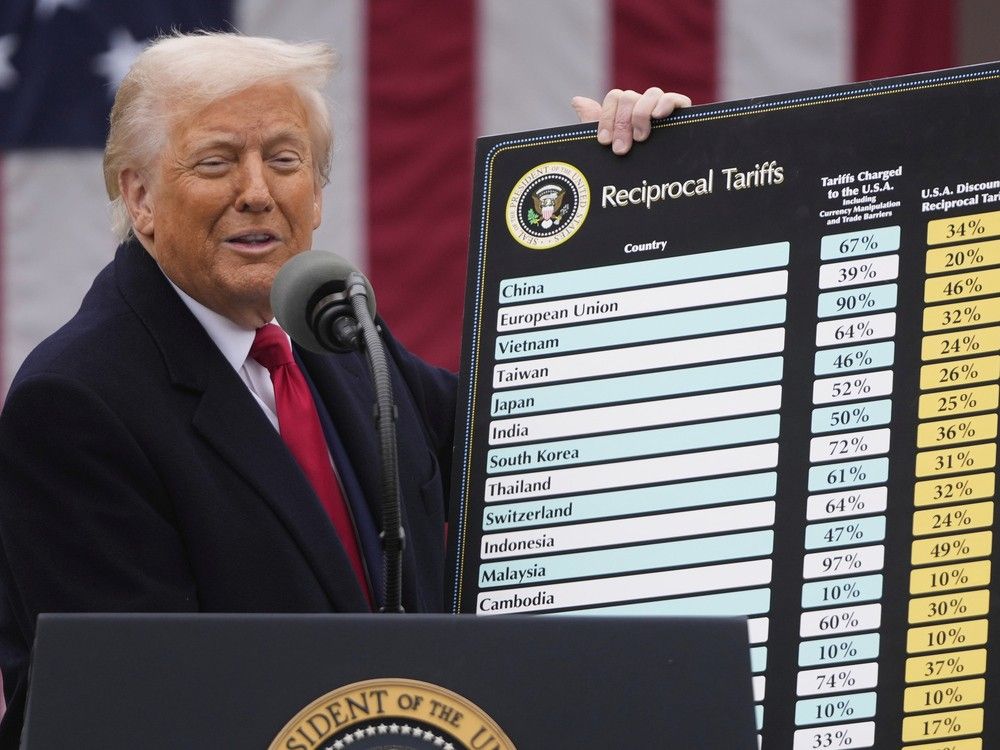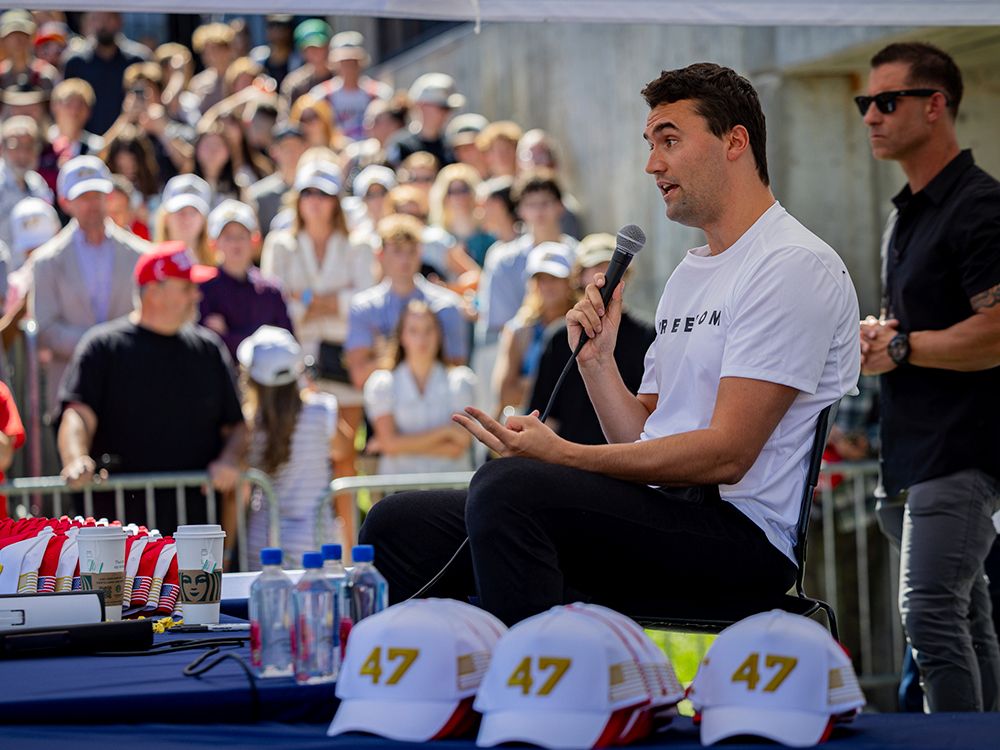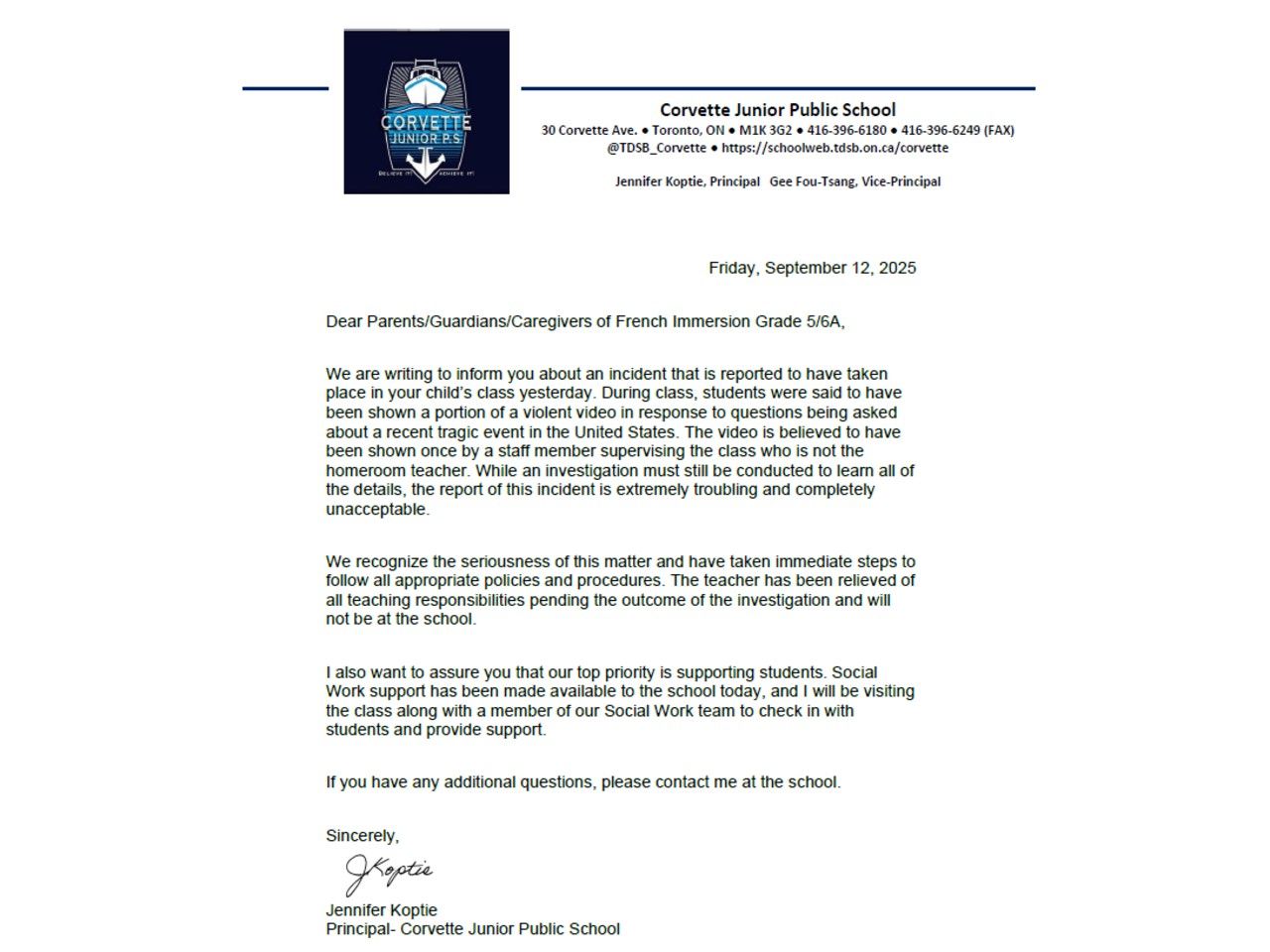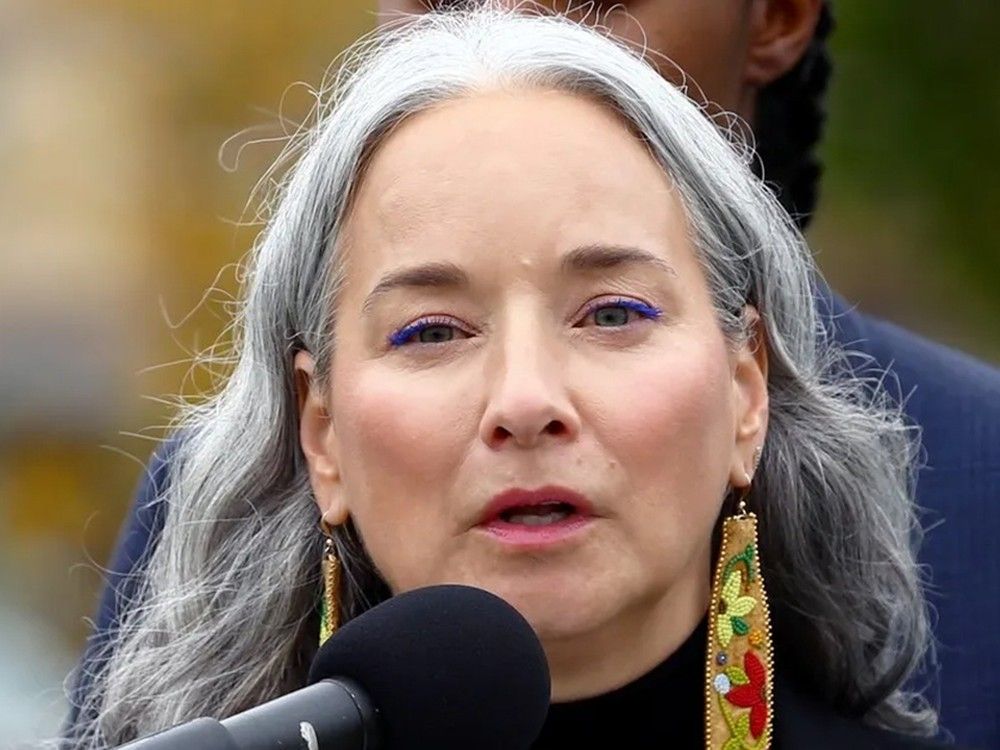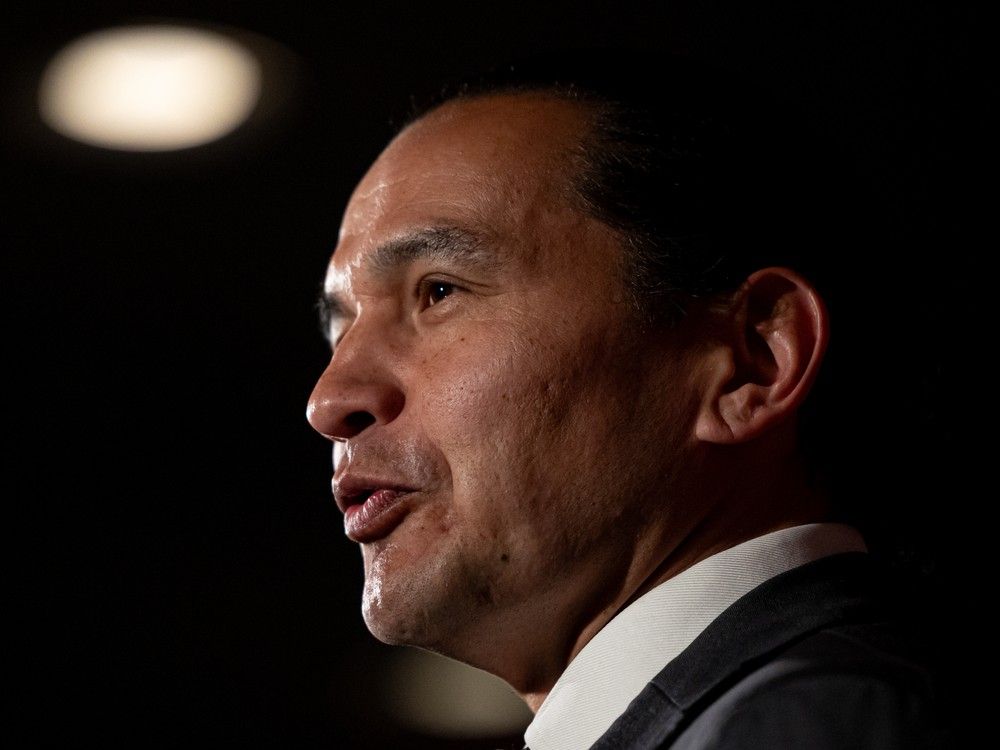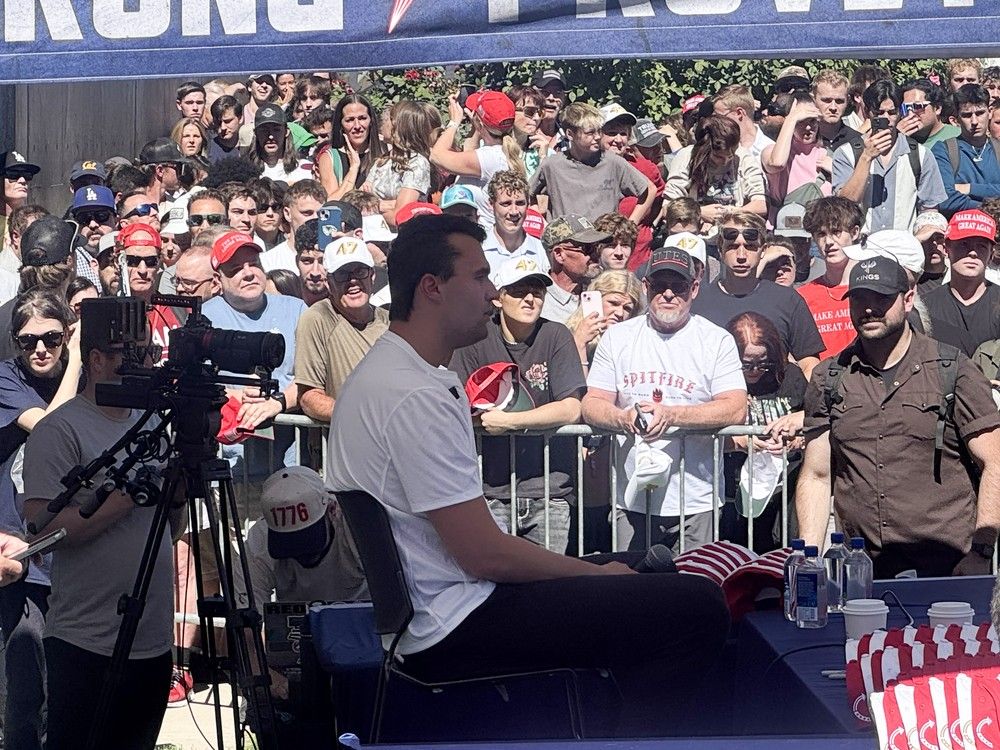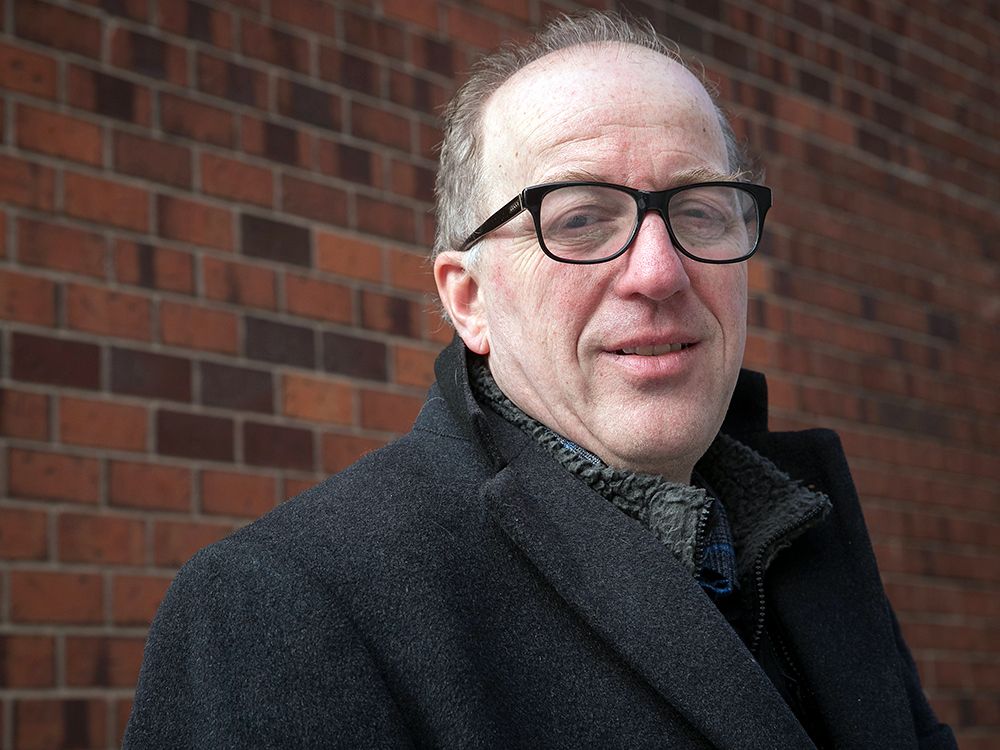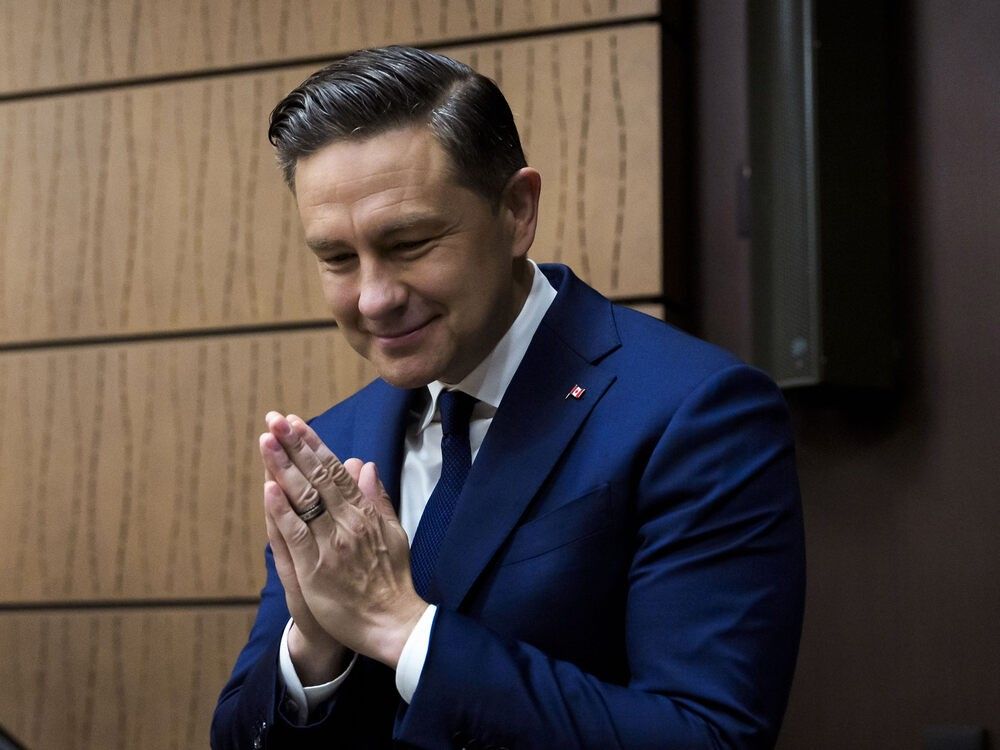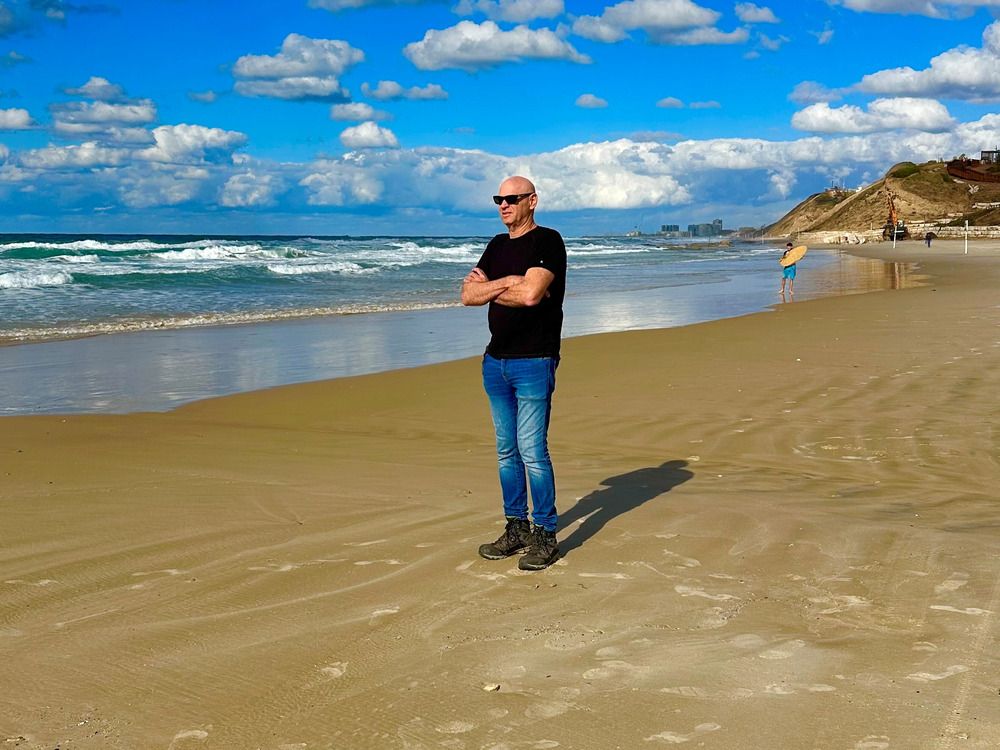
WASHINGTON D.C. — The economies of both the United States and Canada are facing headwinds generated by U.S. President Donald Trump’s tariff war. With central bank decisions looming in both countries amid rising unemployment, the National Post spoke with American economist Douglas Holtz-Eakin this week to discuss where things are heading.
Holtz-Eakin is the president of the American Action Forum, a Washington-based think tank and nonprofit policy institute that promotes free-market policy solutions. He previously served as chief economist of President George W. Bush’s Council of Economic Advisers, director of the Congressional Budget Office, and as the chief economic policy adviser for the McCain 2008 presidential campaign.
(This interview has been edited and condensed due to length.)
Q: How much of the current slowdown in U.S. and Canadian job growth can be directly attributed to the ongoing trade war, rather than normal cyclical trends?
A: That’s a hard question, but I think, essentially, all of it. There’s probably some modest contribution of restrictive monetary policy by the Fed remaining higher than they would’ve otherwise, as they attempt to get inflation back to two per cent. But I think the truth is they would’ve cut had it not been for the tariffs. So all roads lead to the tariff decisions in the U.S. During the fourth quarter last year, we were growing at a 2.5 per cent rate, and if you look at the first and second quarters and tease out all the timing shifts that came because of the tariff announcements, we’re growing at something like one to one and a quarter, so at about half the pace. Nothing else really changed, so you really have to point to the tariffs.
Canada moved into negative territory in the second quarter. The unemployment rate in Canada is highly elevated — over seven per cent now. I don’t think that’s a big mystery. These are two economies that are closely linked by trade and have had this trade war badly disrupt both sides of the border.
Q: Do you see Trump’s tariffs as a negotiating tactic, or have they already locked both countries onto a lower-growth path?
A: The president has talked about tariffs for 40 years in public life. He has shown his hand for the level of tariffs that he’s comfortable with — very large, the largest in a 100 years. I don’t think it’s a negotiating tactic. I don’t know what he would want from Canada — it’s been a mystery from the beginning. He firmly believes in tariffs, despite all logic to the contrary. The tariffs pose about a $400 billion tax increase on American businesses and consumers. That’s the impact it’s having on the economy.
Q: Have Americans and Canadians seen the worst impacts yet from the tariffs, or is this just the beginning?
A: It is just the beginning. There’s been a lot of stop-and-start on the tariff front. The initial announcements really roiled markets. They he held off for 90 days, came back with some more … there have been lawsuits in the United States. They’ve been in court twice now and lost. So there remains some uncertainty about the future of the universal 15 per cent tariffs, the country-specific reciprocal tariffs.
I believe that if he loses in the Supreme Court and those tariffs are taken off the board, he will find some other way to impose roughly the same level of tariff burden. That’s what he’s committed to. He talks about the revenue from it. He talks about what he views as the benefits of forcing people to manufacture in the U.S. So I expect it to continue.
Because of that, I think those businesses that have put off adjusting their pricing in the hope that the tariffs would go away will have to raise their prices to cover these costs. We’ll start to see a bigger impact on both the measured inflation rate and the purchasing power and the household sector. That will be bad news for both economies.
Q: What do you expect in terms of unemployment, sector growth, and prices in the year ahead?
A: I think the second half in the United States is going to be close to zero (growth), maybe negative, with inflation rising from about 3 per cent now to something that looks like four — it could peak at four and a half. Then, next year, the way the legislation that was passed by Congress earlier this year is structured, there will be a fairly large cash flow of tax benefits to households. That will give some support in the first half of 2026, and I expect whatever slowdown we have to reverse relatively quickly.
Federal Reserve cuts will help, but the inflation impacts will remain. The Fed is not in a position now where it gets to focus on inflation. It’s either going to worry about employment or it’s going to worry about inflation. They’re going to focus on employment, cut rates, and inflation will be higher than I think anyone would’ve liked by the time we get to the middle of next year.
Canada’s inflation seems well-contained now, and that’s a tribute to the Bank of Canada. But I think there’s real trouble ahead on the growth and unemployment front. I mean, unemployment’s already fairly elevated, growth is negative, and I think the impacts will be bigger in the second half (of the year). I hate to say that, but that’s what it looks like.
Next year, everybody starts to recover, but they recover in an environment with pressure on prices. I think Canada’s well-positioned to maintain its inflation rates. So I’m not too worried about next year. I think getting to the second half of this year is the tough part.
Q: Canada will recover next year as well?
A: In Canada, you’ll get the spillover benefits of the U.S. economy recovering. This year, two things are going wrong. You have the direct impact of the tariffs, and you have the indirect loss of the U.S. slowing down. So demand for lumber goes down, demand for oil goes down, and demand for a lot of key Canadian exports in the U.S. goes down.
That will reverse next year. It might not be a boom, but it’ll be much better than 2025.
The tax breaks are a big part of that — it’s pretty big, adding about $280 billion cash flow to the household sector early in the year. That’s a fairly substantial fiscal stimulus, and the Fed will be cutting as well, which takes a while to kick in. So we’ll see rate cuts in the second half of this year that’ll really have their impact next year.
Q: Will this translate into more U.S. manufacturers investing in their own production?
A: I’m skeptical of that. We’ve seen this movie before, and we know how it works. Steel tariffs are going to cost the United States more manufacturing jobs than they’ll save in the steel industry. So that’s a net negative. The aluminum tariffs are the same way. In terms of using the tariff walls as an incentive to relocate production into the U.S., that takes a long time. It’s very expensive and, in some cases, it still isn’t going to happen. So I’m dubious that we’re going to see anything really quickly on that front.
Q: What is the significance, or what might happen with the 2026 CUSMA renegotiation? What should Canada and Mexico expect from the U.S. administration?
A: I think that’s the real wildcard for the U.S. and Canada. I would like to see (the Trump) administration show its hand on what they want to do on that, and what Canada and Mexico should expect in those talks. I wish I had a better read on what they’re thinking, but I don’t know.
Q: With both the U.S. and Canada reporting disappointing job numbers, is Trump’s trade war backfiring on the North American workers it was trying to protect?
A: I think so. He was elected, essentially, to deliver better economic performance with low inflation. And he is on track to fail. The economy’s downshifting. It’s growing more slowly, inflation’s up, not down. That isn’t what people wanted.
Q: Do you expect any backlash during next year’s midterm elections as a result?
A: Yes. If the elections were held today, the Republicans in the House and Senate would be in real trouble. The only question is, can the things I mentioned earlier, some of the tax benefits that will be coming into law, and some of the feedback that they have on the economy, generate a more favourable attitude?
As for inflation, I just don’t see how he can put that genie back in the bottle before the midterms, and that is a really unpopular phenomenon in the U.S. People point to unemployment – if you’re unemployed, it’s bad, but everyone who both doesn’t have a job and has a job faces inflation. So inflation’s a really powerful, negative political development. I think they need to worry about that.
Q: Canada dropped its retaliatory tariffs. Does that expose the futility of such escalation, or do you think that Ottawa should have stuck with it?
A: No, the Trump tariff is a self-inflicted wound, and I don’t think Ottawa should mimic that. At this point, about 85 per cent of U.S.-Canada trade is exempt from tariffs. So I think a better route forward is to encourage the U.S. and Mexico to sit down and talk about CUSMA and use that as a way to address the remainder.
Q: Do you think the U.S. has underestimated the collateral damage it’s doing to its closest ally, Canada, and, if so, how does that hurt America’s credibility as a global economic leader?
A: That reputation has been badly damaged. We’re now seeing Canada talking about closer relations with Europe, bypassing the United States. We’ve damaged the relationship with India, and everywhere you look, former allies are now more skeptical. We cost the Japanese premier his job. It’s been a great year. That damage lasts. It’s going to take a lot to repair it.
Q: The weak labour reports suggest that businesses are delaying hiring. Do you see this as a temporary pause or a deeper signal that firms no longer trust the stability of U.S. trade policy or North American trade policy?
A: I think the U.S. labor market has essentially come to a halt. No one’s hiring, but there have not been mass layoffs, and we haven’t seen a dramatic rise in the use of unemployment insurance. The (relatively steady) unemployment rate — that’s the temporary phenomenon. Businesses are waiting and not shedding jobs, hoping that the tariffs will be disallowed. They give a better signal on growth. If tariffs aren’t lifted, I think we’ll start to see the layoffs on a larger scale. That will be the second half of this year.
Q: You said U.S. unemployment, currently at 4.3 per cent, is likely to rise – by how much?
A: We did a calculation that, if you look at the number of discouraged workers in the surveys who are out of the labor force but would really rather be working, and if you count them as unemployed, our unemployment rate is already 7.8 per cent. It’s just disguised by people who have quit looking. So I expect the measured unemployment rate to rise further — to go up to five easily.
Q: Farming and manufacturing were supposed to benefit from the tariff protections, but they seem to both be shedding jobs. Why?
A: I’ve never understood the administration’s logic on that. I was in the Bush White House in 2001 when we did steel tariffs, and we tracked the impact. It cost us much more in manufacturing jobs than it saved in the steel industry.
The same is going on here. Manufacturing is faced with higher input costs on steel, aluminum, copper, and lumber. This isn’t helping them at all. And the farmers are just the very first retaliation on everyone’s list. American farmers always bear the brunt of these trade wars. They were badly damaged during the China trade war back in (Trump’s) first term.
Q: Is North America at risk of permanently damaging the integrated supply chain model that helped it compete globally? Or is this a temporary disruption that a policy correction can fix?
A: A policy correction can fix it. The issue is, how quickly will it happen? It’s worth emphasizing that while the president has gone down this road, historically, he has shown a lot of response to pressure. When he imposed the steel tariffs in 2018, he got a lot of pushback and ultimately exempted Canada, Mexico, Brazil, Germany — basically all the places we import steel from. So, if this disruption continues and the cost becomes too high, the auto manufacturers are not going to be shy about telling him. The National Association of Manufacturers is going to let him know — we may see that happen quietly, as he doesn’t like losing face. But he’ll quietly soften the impacts over time.
Q: The Federal Reserve and Bank of Canada are preparing decisions amid all this uncertainty. What do you expect from both decisions this month, and how much can monetary policy patch over what is essentially a politically driven trade crisis?
A: Monetary policy is good at dealing with cyclical fluctuations. I expect the Federal Reserve to cut (the interest rate). There is talk of 50 basis points, but I think 25 is the right number. They will probably cut at least twice in the second half of this year. I think the Bank of Canada will probably cut, as it’s facing the same inflation pressures that the US has, and Canada has an unemployment problem. But that doesn’t solve structural mismanagement, which is what the tariffs are. So if you put those in place and leave them in place, monetary policy can’t fix that. It’ll take care of some of the softness in demand that comes from the sharp increase in taxes, but that’s all it can really do.
Q: Are the central banks kind of trapped now? Are they risking credibility?
A: I don’t think they’re risking credibility. I think they’re just stuck. The tariffs present this terrible, unpalatable choice where you have inflation pressures that say you should tighten. Then, you have unemployment pressures that say you should cut, and you can’t do both. They’re just in a dilemma.
Q: If the Fed cuts rates more aggressively than the Bank of Canada could, how disruptive could widening policy divergence be for exchange rates, capital flows, or cross-border trade?
A: It can be very disruptive. We think back to when the Fed began the tightening cycle and went up five (percentage) points quickly compared to the rest of the world, it was tremendously disruptive. I don’t expect us to get that far out of line with Canada. But if the Bank of Canada were to cut even more aggressively, you would see the appreciation of the Canadian dollar, and that wouldn’t help at all.
Q: If you were advising Ottawa right now, what economic or diplomatic strategy would you urge Canada to take to protect itself from the U.S. trade volatility?
A: I think you explore trade relations with large other partners of the same type, so Europe and the United Kingdom. I think getting everyone to the table on CUSMA is the best thing to do with the United States, because that’s a circumstance in which it doesn’t come down to (Mark) Carney versus Trump, or anything that looks like a showdown. The president doesn’t like to be backed into a corner. He reacts poorly to that. So get a nice three-way conversation going about the future of the North American economies, and see what you can get in those circumstances.
Our website is the place for the latest breaking news, exclusive scoops, longreads and provocative commentary. Please bookmark nationalpost.com and sign up for our daily newsletter, Posted, here.
